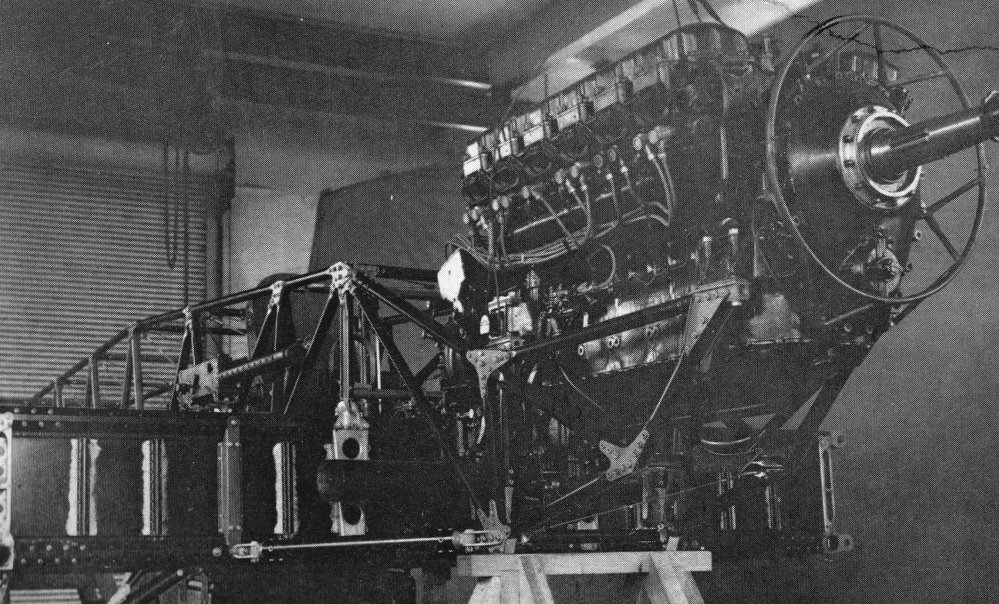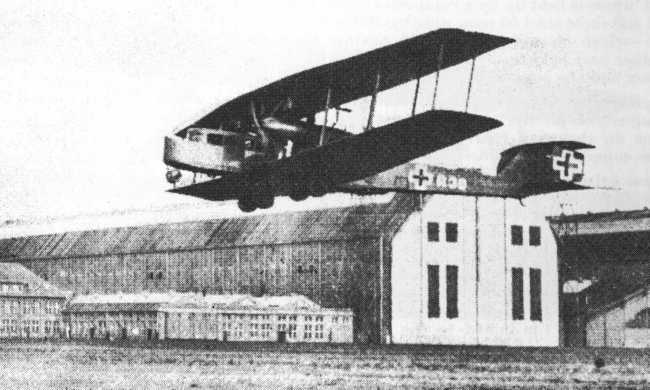|
Günter Steinhausen
Günther Steinhausen (15 September 1917 – 6 September 1942) was a German Luftwaffe military aviator during World War II. As a fighter ace, Steinhausen claimed 40 aerial victories over the Western Allies during the North African campaign. Born in Lobkevitz on the isle of Rügen, Steinhausen was posted to ''Jagdgeschwader'' 27 (JG 27—27th Fighter Wing) in the spring of 1941. This unit was ordered to North Africa in April 1941. He claimed his first aerial victory on 17 June. Steinhausen claimed his 40th and last aerial victory on 6 September 1942. Later that day, he was shot down, initially posted as missing in action, assumed killed in action. Posthumously, Steinhausen was awarded the Knight's Cross of the Iron Cross and promoted to ''Leutnant'' (second lieutenant). Career Steinhausen was born 15 September 1917 at Lobkevitz, present-day part of Breege, on the island of Rügen. After flight training, Steinhausen was posted, as an ''Unteroffizier'', to 1. '' Staffel'' (1s ... [...More Info...] [...Related Items...] OR: [Wikipedia] [Google] [Baidu] |
Rügen
Rügen (; Rani: ''Rȯjana'', ''Rāna''; , ) is Germany's largest island. It is located off the Pomeranian coast in the Baltic Sea and belongs to the state of Mecklenburg-Western Pomerania. The "gateway" to Rügen island is the Hanseatic city of Stralsund, where it is linked to the mainland by road and railway via the Rügen Bridge and Causeway, two routes crossing the two-kilometre-wide Strelasund, a sound of the Baltic Sea. Rügen has a maximum length of (from north to south), a maximum width of in the south and an area of . The coast is characterised by numerous sandy beaches, lagoons () and open bays (), as well as peninsulas and headlands. In June 2011, UNESCO awarded the status of a World Heritage Site to the Jasmund National Park, characterised by vast stands of beeches and chalk cliffs like King's Chair, the main landmark of Rügen island. The island of Rügen is part of the district of Vorpommern-Rügen, with its county seat in Stralsund. The towns on Rüg ... [...More Info...] [...Related Items...] OR: [Wikipedia] [Google] [Baidu] |
Organization Of The Luftwaffe (1933–1945)
Between 1933 and 1945, the organization of the Luftwaffe underwent several changes. Originally, the German military high command, for their air warfare forces, decided to use an organizational structure similar to the army and navy, treating the aviation branch as a strategic weapon of war. Later on, during the period of rapid rearmament, the Luftwaffe was organized more in a geographical fashion. Under the terms of the Treaty of Versailles (1919), Germany was prohibited from having an air force, with the former German Empire's ''Luftstreitkräfte'' disbandment in 1920. German pilots were secretly trained for military aviation, first in the Soviet Union during the late 1920s, and then in Germany in the early 1930s. In Germany, the training was done under the guise of the German Air Sports Association ( (DLV)) at the Central Commercial Pilots School ( (ZVF)). Following its 15 May 1933 formation in secret, the formation of the German air arm was openly announced in February 1935, ... [...More Info...] [...Related Items...] OR: [Wikipedia] [Google] [Baidu] |
Royal Air Force
The Royal Air Force (RAF) is the Air force, air and space force of the United Kingdom, British Overseas Territories and Crown Dependencies. It was formed towards the end of the World War I, First World War on 1 April 1918, on the merger of the Royal Flying Corps (RFC) and the Royal Naval Air Service (RNAS). Following the Allies of World War I, Allied victory over the Central Powers in 1918, the RAF emerged as the largest air force in the world at the time. Since its formation, the RAF has played History of the Royal Air Force, a significant role in Military history of the United Kingdom, British military history. In particular, during the Second World War, the RAF established Air supremacy, air superiority over Nazi Germany's Luftwaffe during the Battle of Britain, and led the Allied strategic bombing effort. The RAF's mission is to support the objectives of the British Ministry of Defence (United Kingdom), Ministry of Defence (MOD), which are to "provide the capabilities nee ... [...More Info...] [...Related Items...] OR: [Wikipedia] [Google] [Baidu] |
Tobruk
Tobruk ( ; ; ) is a port city on Libya's eastern Mediterranean coast, near the border with Egypt. It is the capital of the Butnan District (formerly Tobruk District) and has a population of 120,000 (2011 est.)."Tobruk" (history), ''Encyclopædia Britannica'', 2006, Britannica Concise Encyclopedia, ''Concise.Britannica.com'BC-Tobruk. Tobruk was the site of an ancient Greek colony and, later, of a Roman fortress guarding the frontier of Cyrenaica. Over the centuries, Tobruk also served as a waystation along the coastal caravan route. By 1911, Tobruk had become an Italian military post. During World War II, Allied forces, mainly the Australian 6th Division, took Tobruk on 22 January 1941. The Australian 9th Division (" The Rats of Tobruk") pulled back to Tobruk to avoid encirclement after actions at Er Regima and Mechili and reached Tobruk on 9 April 1941. There prolonged fighting followed, against a siege by German and Italian forces. Although the siege was lifted ... [...More Info...] [...Related Items...] OR: [Wikipedia] [Google] [Baidu] |
Hawker Hurricane
The Hawker Hurricane is a British single-seat fighter aircraft of the 1930s–40s which was designed and predominantly built by Hawker Aircraft Ltd. for service with the Royal Air Force (RAF). It was overshadowed in the public consciousness by the Supermarine Spitfire during the Battle of Britain in 1940, but the Hurricane inflicted 60% of the losses sustained by the ''Luftwaffe'' in the campaign, and fought in all the major theatres of the Second World War. The Hurricane originated from discussions between RAF officials and aircraft designer Sir Sydney Camm about a proposed monoplane derivative of the Hawker Fury biplane in the early 1930s. Despite an institutional preference for biplanes and lack of interest by the Air Ministry, Hawker refined its monoplane proposal, incorporating several innovations which became critical to wartime fighter aircraft, including retractable landing gear and the more powerful Rolls-Royce Merlin engine. The Air Ministry ordered Hawker's ''Interce ... [...More Info...] [...Related Items...] OR: [Wikipedia] [Google] [Baidu] |
Ljubljana
{{Infobox settlement , name = Ljubljana , official_name = , settlement_type = Capital city , image_skyline = {{multiple image , border = infobox , perrow = 1/2/2/1 , total_width = 260 , align = center , caption_align = center , image1 = Ljubljana made by Janez Kotar.jpg , caption1 = Ljubljana old town , image2 = Ljubljana Robba fountain (23665322093).jpg , caption2 = Town Hall , image3 = LOpéra-Ballet (Ljubljana) (9408363203).jpg , caption3 = Opera House , image4 = Dragon on the Dragon Bridge in Ljubljana-3906673.jpg , caption4 = Dragon Bridge , image5 = Ljubljana (36048969485).jpg , caption5 = University of Ljubljana , image6 = Le Château de Ljubljana et la place du ... [...More Info...] [...Related Items...] OR: [Wikipedia] [Google] [Baidu] |
Messerschmitt Bf 109
The Messerschmitt Bf 109 is a monoplane fighter aircraft that was designed and initially produced by the Nazi Germany, German aircraft manufacturer Messerschmitt#History, Bayerische Flugzeugwerke (BFW). Together with the Focke-Wulf Fw 190, the Bf 109 formed the backbone of the ''Luftwaffe's'' fighter force during the World War II. It was commonly called the Me 109 by Allied aircrew and some German aces/pilots, even though this was not the official model designation. The Bf 109 was designed by Willy Messerschmitt and Robert Lusser, who worked at BFW during the early to mid-1930s. It was conceived as an interceptor aircraft, interceptor. However, later models were developed to fulfill multiple tasks, serving as Escort fighter, bomber escort, fighter-bomber, day fighter, day-, night fighter, night-, all-weather fighter, ground-attack aircraft, and aerial reconnaissance aircraft. It was one of the most advanced fighters when the fighter first appeared, being furnished with an all-me ... [...More Info...] [...Related Items...] OR: [Wikipedia] [Google] [Baidu] |
Gazala
Gazala, or ʿAyn al-Ġazāla ( ), is a small Libyan village near the coast in the northeastern portion of the country. It is located west of Tobruk. History In the late 1930s (during the Libya as Italian colony, Italian occupation of Libya), the village was the site of an Arab concentration camp, which the men of the Senussi resistance tried in vain to penetrate.Kalifa Tillisi, Tillisi, Kalifa, “Mu’jam Ma’arik Al Jihad fi Libia1911-1931”, Dar Ath Thaqafa, Beirut, Lebanon, 1973, pp.370-371. Gazala is perhaps best known for the Battle of Gazala, memorable World War II battle that took place in the surrounding area from May to June 1942 between Axis powers, Axis forces (led by Erwin Rommel) and Allies (World War II), Allied forces (led by Neil Ritchie). This battle resulted in an Axis victory and the subsequent capture of Tobruk on 21 June 1942. Notes Populated places in Butnan District Cyrenaica Villages in Libya {{Libya-geo-stub ... [...More Info...] [...Related Items...] OR: [Wikipedia] [Google] [Baidu] |
Tripoli, Libya
Tripoli, historically known as Tripoli-of-the-West, is the capital city, capital and largest city of Libya, with a population of about 1.317 million people in 2021. It is located in the northwest of Libya on the edge of the desert, on a point of rocky land projecting into the Mediterranean Sea and forming a bay. It includes the port of Tripoli and the country's largest commercial and manufacturing center. It is also the site of the University of Tripoli. Tripoli was founded in the 7th century BC by the Phoenicians, who gave it the Libyco-Berber name (), before passing into the hands of the Greek rulers of Cyrenaica as Oea (). Due to the city's long history, there are many sites of archeological significance in Tripoli. ''Tripoli'' may also refer to the (top-level administrative division in the Libyan system), the Tripoli District, Libya, Tripoli District. Name In the Arab world, Tripoli is also known as "Tripoli-of-the-West" (), to distinguish it from Tripoli, Lebanon, known ... [...More Info...] [...Related Items...] OR: [Wikipedia] [Google] [Baidu] |
Operation Marita
The German invasion of Greece or Operation Marita (), were the attacks on Greece by Italy and Germany during World War II. The Italian invasion in October 1940, which is usually known as the Greco-Italian War, was followed by the German invasion in April 1941. German landings on the island of Crete (May 1941) came after Allied forces had been defeated in mainland Greece. These battles were part of the greater Balkans Campaign of the Axis powers and their associates. Following the Italian invasion on 28 October 1940, Greece, with British air and material support, repelled the initial Italian attack and a counter-attack in March 1941. When the German invasion, known as Operation Marita, began on 6 April, the bulk of the Greek Army was on the Greek border with Albania, then a vassal of Italy, from which the Italian troops had attacked. German troops invaded from Bulgaria, creating a second front. Greece received a small reinforcement from British, Australian and New Zealand forc ... [...More Info...] [...Related Items...] OR: [Wikipedia] [Google] [Baidu] |
Staaken
Staaken () is a locality at the western rim of Berlin within the borough of Spandau. History First mentioned in a 1273 deed as ''Stakene'' (from Middle Low German: ''staken'', "stakes") in the Mittelmark region of the Margraviate of Brandenburg, the linear settlement probably arose around 1200 in the course of the German eastward migration. The estates were then held by the Benedictine nunnery of Spandau; after the Protestant Reformation they fell to the Spandau municipal administration. The former village became part of Berlin by the Greater Berlin Act of 1920. The development of the area started with the construction of the Staaken garden city by architect Paul Schmitthenner in 1914. At the beginning of World War I the Luftschiffbau Zeppelin company acquired large estates in Staaken, where from 1915 on it manufactured zeppelin airships and the series of one-off '' Riesenflugzeug'' "giant" multi-engined bombers, among the largest of their day anywhere, culminating in the ... [...More Info...] [...Related Items...] OR: [Wikipedia] [Google] [Baidu] |








